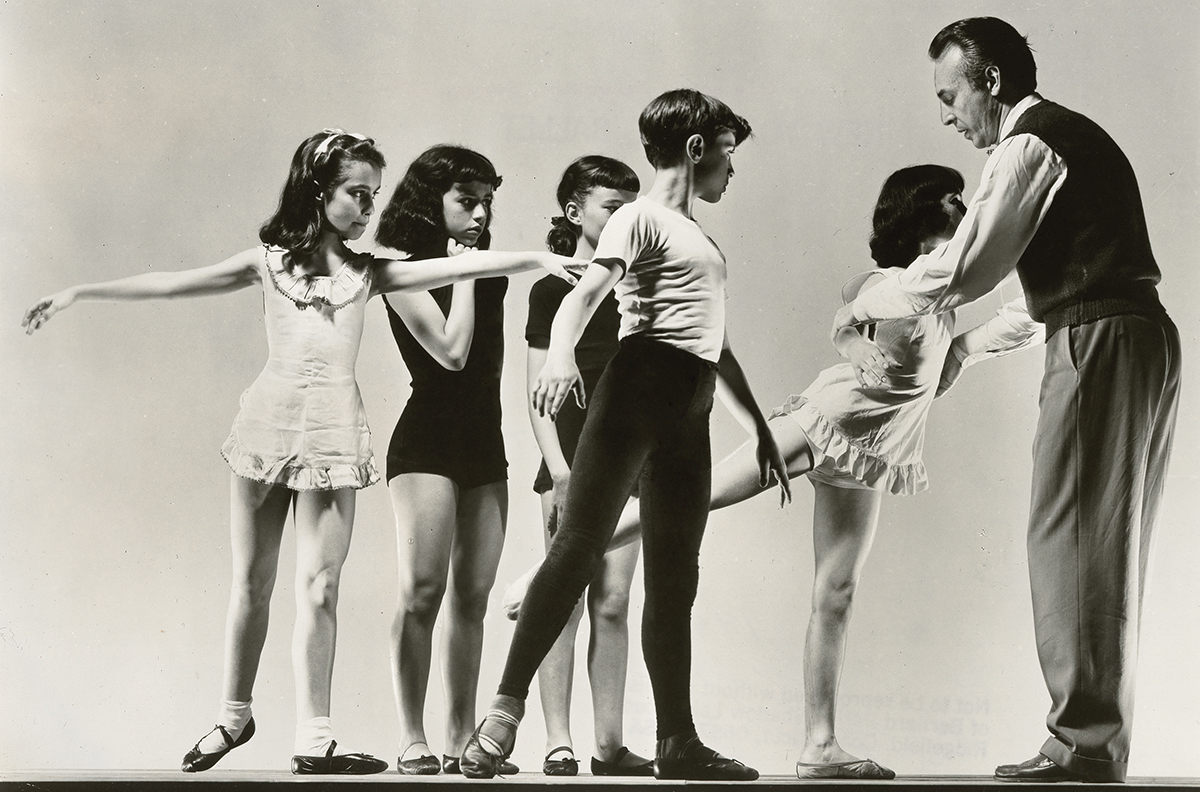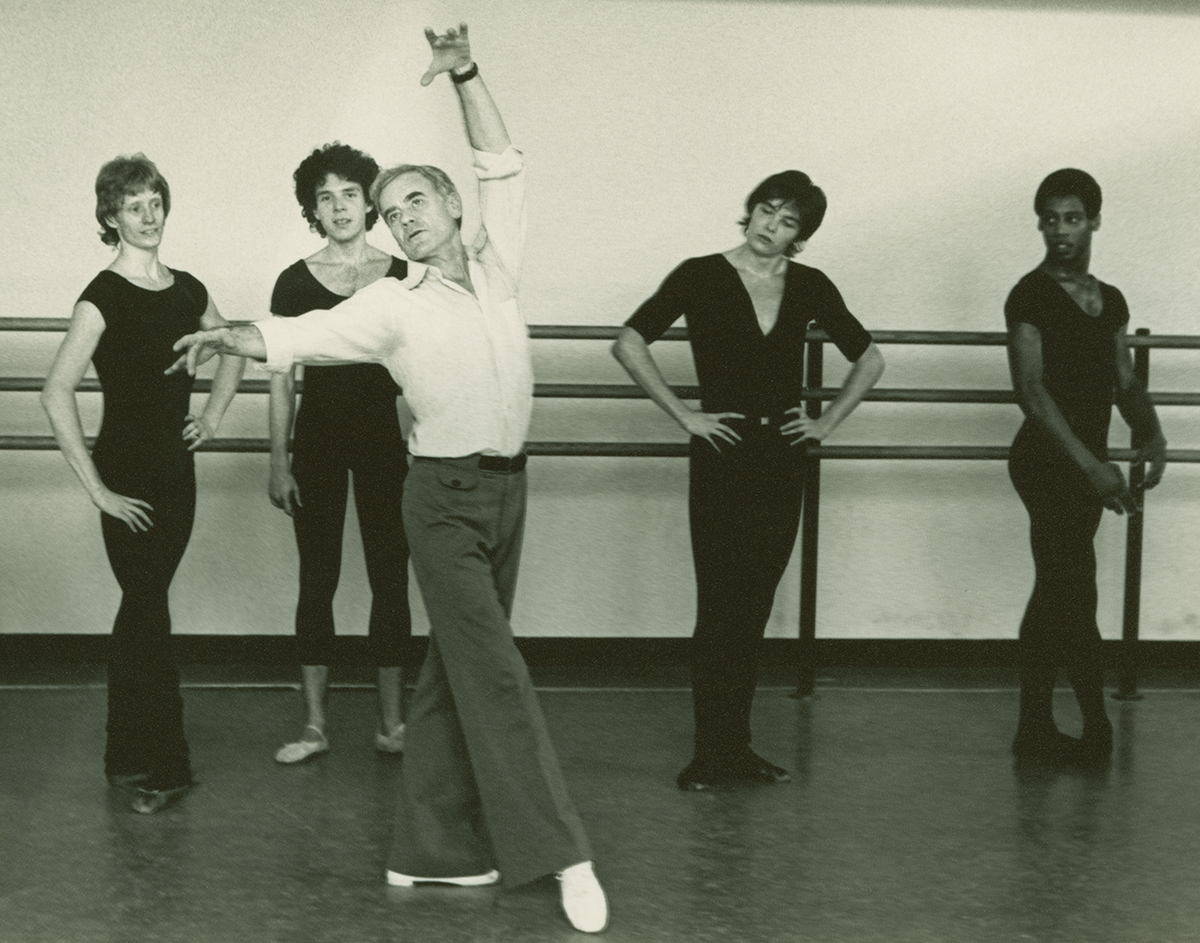April 25, 2024
#SAB90 – 1954: The Nutcracker debuts at New York City Ballet featuring children from SAB
Read the latest edition of #SAB90 to learn more about the history of SAB students performing with the New York City Ballet.

Over the past 90 years, the School of American Ballet has contributed immeasurably to the artistic life of America: giving birth to an internationally acclaimed ballet company, shaping generations of finely trained dancers, and establishing an American style of classical ballet that stands alongside the French and Russian classical traditions. Learn more about the School’s history and influence as we share monumental moments in honor of #SAB90.
At the very heart of the School of American Ballet is its roster of teachers. Throughout the 1940s and 50s, Balanchine continued to solidify the School’s eminence as America’s leading classical ballet academy with an assemblage of acclaimed ballet instructors.
Among them was Anatole Oboukhoff, a former leading dancer at the Maryinsky Ballet, who joined the faculty in 1941 and continued teaching until he died in 1962. He received his training at the Imperial Ballet School in St. Petersburg before performing with several companies in Europe, including Ballets Russes de Monte Carlo under the direction of René Blum. Oboukhoff was an exacting teacher who was respected and beloved by many students.
Felia Doubrovska joined the faculty in 1949, after many years as a leading ballerina with Diaghilev’s Ballets Russes, where Balanchine created major roles for her. She went on to become one of the most significant teachers of her time, known as an inspiring instructor who always expected excellence. Madame Doubrovska taught the advanced girls’ classes at SAB, passing on her expertise to three generations of students before she retired in 1980 at the age of eighty-four.
“Her students remember her as serene, elegant, and authoritative. She was a teacher who gave her students a sense of the past by bringing in photographs of herself and other dancers of her generation.1“
Antonina Tumkovsky was another key addition to the group, who taught generations of dancers at all levels, before retiring in 2003 at age 98. Tumkovsky was a Kiev soloist who had trained under Agrippina Vaganova before immigrating to New York in 1949. She taught an exceptionally wide range of the School’s core class offerings for students of all ages, and her teaching style was particularly effective in preparing dancers for the Balanchine repertory.
One of the most beloved instructors in SAB’s history, Stanley Williams, first met Balanchine in the mid-1950s and guest taught at the School before later joining the permanent faculty in 1964. A former member of the Royal Danish Ballet, Williams trained as a student in the Bournonville method, named after nineteenth-century Danish ballet master and choreographer August Bournonville. Bournonville technique emphasizes ease and natural grace over virtuosic display, and stresses both the importance of male dancing and rapid, accurate footwork. Following in that tradition, Williams’ teaching focused on precision, clarity of movement, and integrity in steps, and he was renowned for mentoring male dancers. He would go on to serve as the School’s Co-Chairman of Faculty from 1983 to 1997.

While the the School’s core faculty represented the best of classical ballet’s past, Balanchine continued to refine his own groundbreaking style based on the Russian classical tradition. Balanchine’s approach to ballet, which would eventually become known as the “neoclassical” style, was marked by its clarity, speed, precision, and musicality—ultimately establishing an aesthetic for the School and New York City Ballet (NYCB) that endures today.
1.Dunning, J. (1985) ‘But First A School’ The First Fifty Years of the School of American Ballet. New York, New York: Elisabeth Sifton Books.
April 25, 2024
Read the latest edition of #SAB90 to learn more about the history of SAB students performing with the New York City Ballet.
March 26, 2024
Read the latest edition of #SAB90 to learn more about SAB's early relationship with New York City Ballet.
January 19, 2024
Our new monthly series, #SAB90, we'll be sharing a short article detailing highlights of the School's history. Read our first edition for an overview on how SAB was first established by co-founders Lincoln Kirstein and George Balanchine.